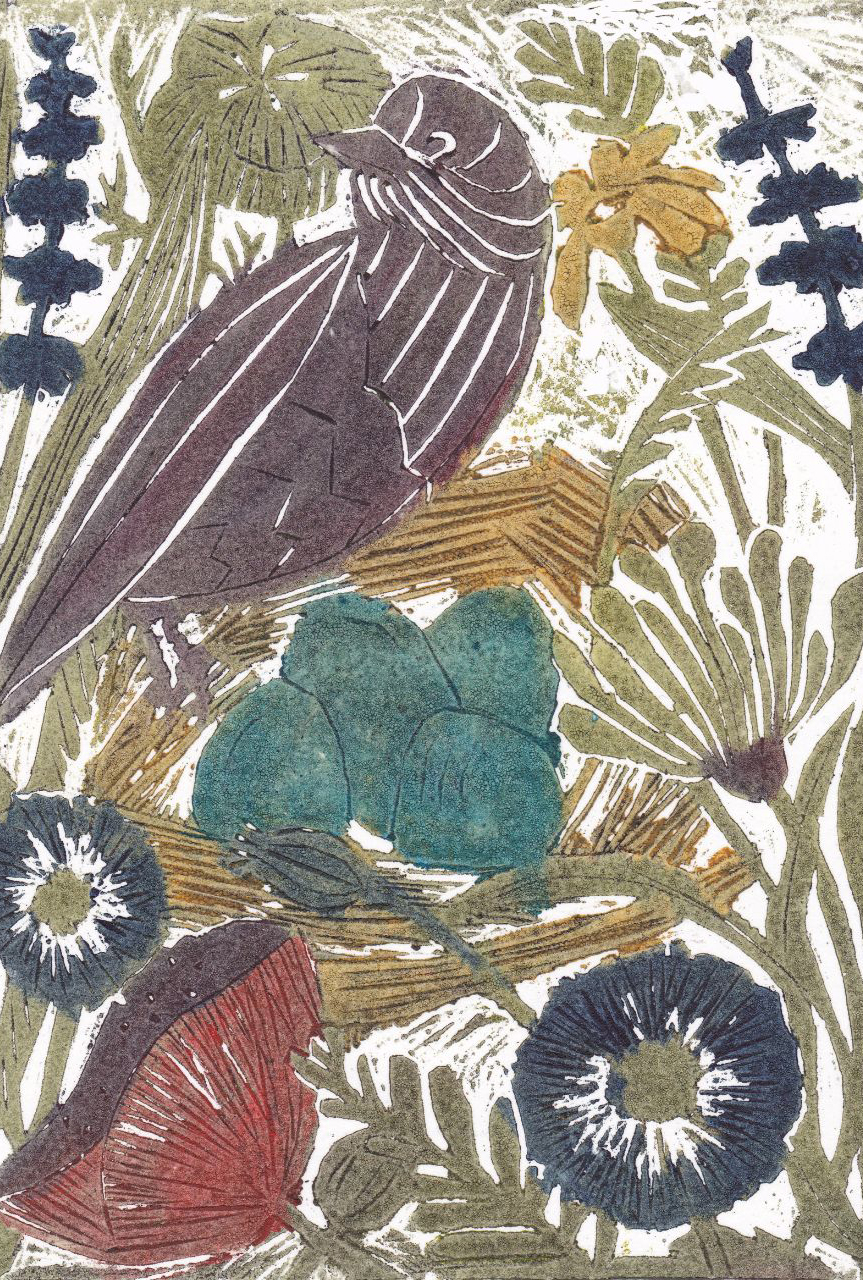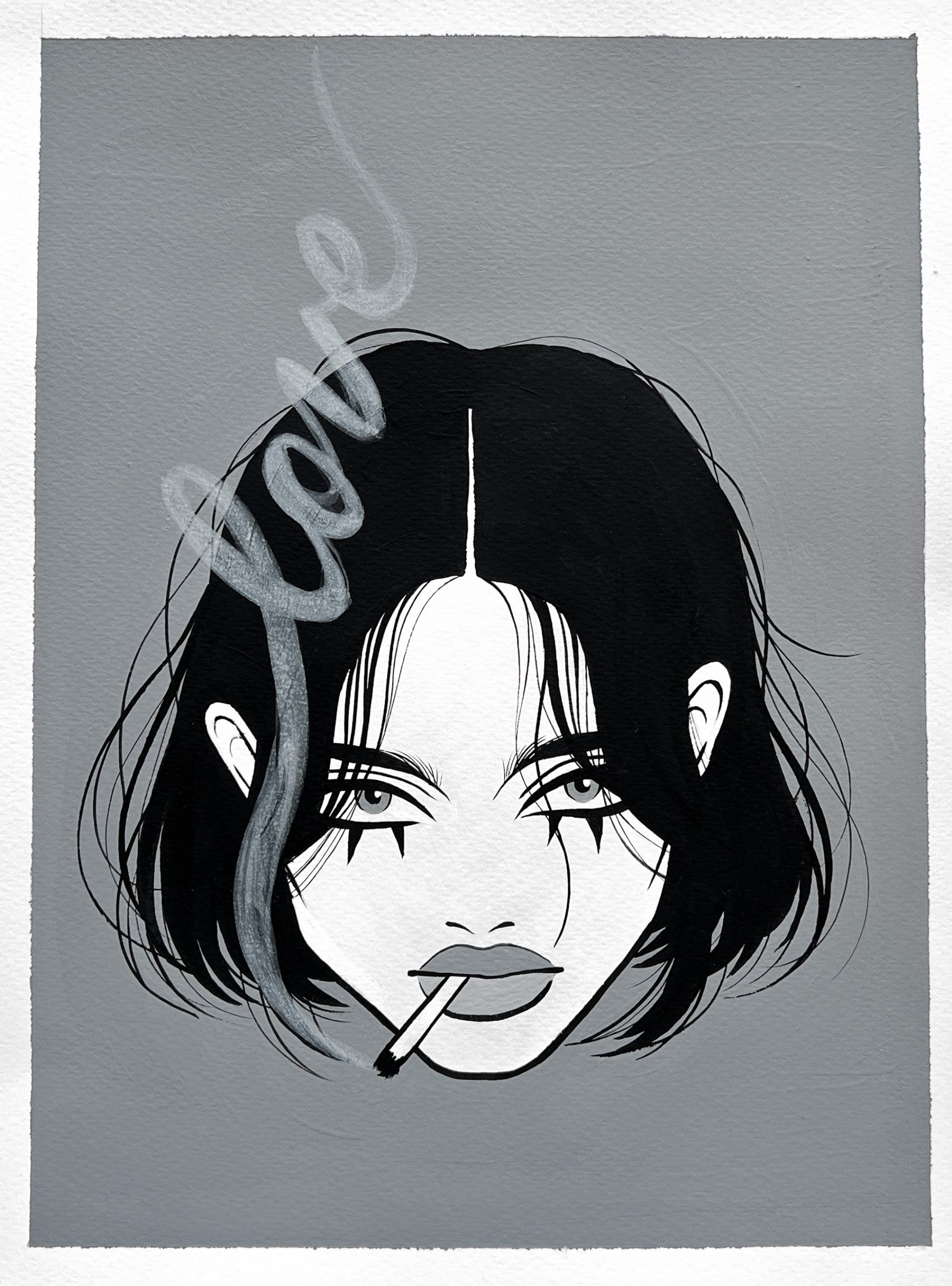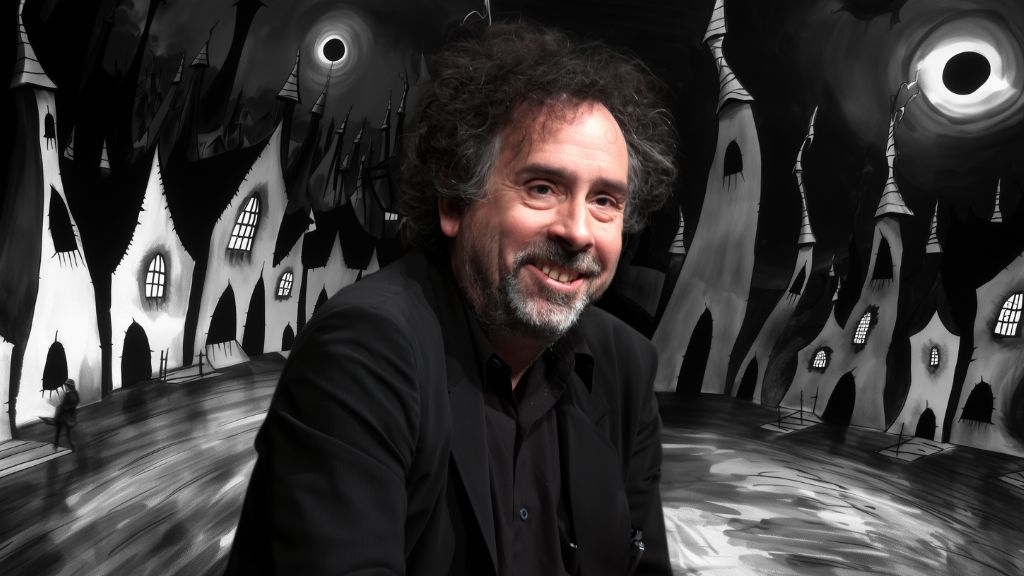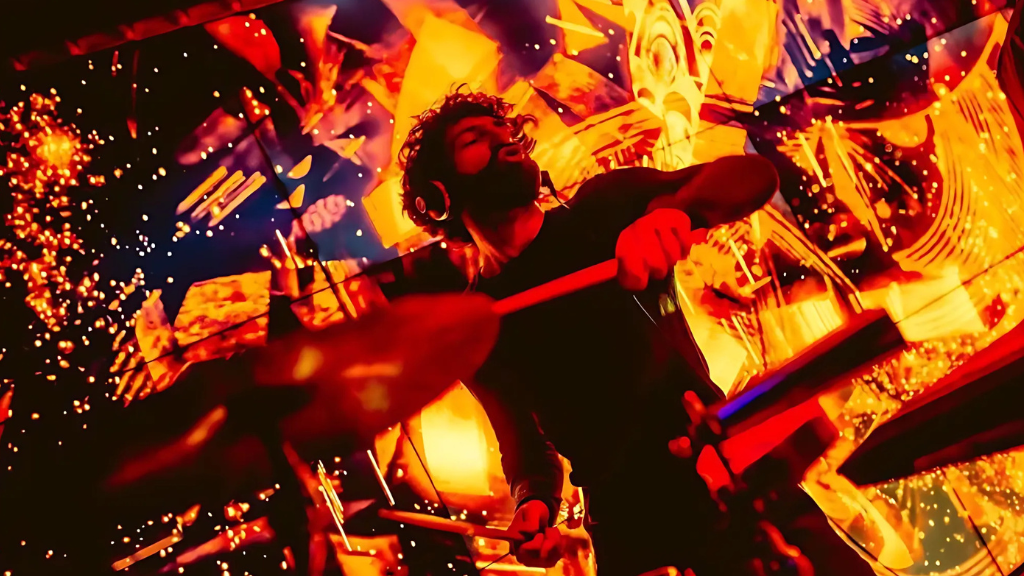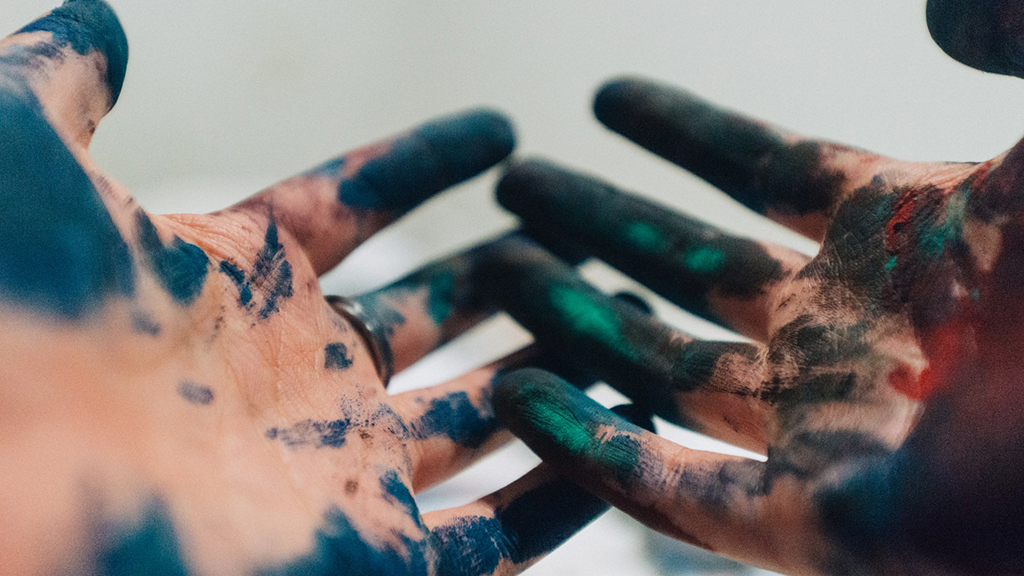
Artists and poets who comprehend the human soul
The path of an artist is connected with a concept of comprehension of a human soul, with all its intricacies and contradictions. This exact idea has always permeated the art of craftsmen of the past, and this very concept gave an impulse for the emergence of a new generation of artists, including actors, poets, painters and sculptors, who long for understanding the basic principles of people’s emotional development. In this article, Afisha.London magazine talks more about several of these creators.
One of the modern authors who is working in the direction of comprehension of a human soul is Anastasiya Kostina. Her works address the phenomenon of dynamic relationship between nature and man, influenced by various circumstances, as well as the interaction of an individual’s emotional component and natural environment. The main concept of her pieces lies in the idea of freedom as an unconditional state of soul and nature. It is the opportunity to witness the uncovering subtleties of a relationship between the artificial and the natural, masterfully depicted by Anastasiya, that is particularly interesting for the viewer. In each of her works the artist finds an opportunity for a dialogue with a spectator, inviting them to take a look at eternal questions from a new, sometimes unexpected, standpoint. Analysing the importance of this codependent relations, the artist turns to the unified viewer’s experience, therefore achieving the highest level of understanding with her audience.
- Anastasiya Kostina, Fairy
- Anastasiya Kostina, Bird in the Nest, fragment
Anastasiya primarily uses traditional graphic techniques, such as lithography, monotype, woodcut, linocut, collage, mezzotint, as well as mixed techniques and digital art, which broadens her opportunities to communicate the ideas the best way possible. This approach allows the artist to provide the audience with a unique experience of immersion into her inner world.
This theme is analysed from a completely different angle by Elena Noire, a 2D-artist from St. Petersburg who creates laconic illustrations on the familiar themes. Elena came up with her own heroine, who is a key character in all her works. What does it mean to be a woman, what does she have to go through and how would she feel about it? The heroine shows us that she can be strong and powerful, sometimes weak and melancholic, and she can also be a victim or initiator of unhealthy relationships. These three sides of human nature are the main themes that permeate all Elena’s pieces. The main purpose of Elena’s work is to let the viewer see oneself in her heroine, so almost all illustrations contain a meaning that anybody can interpret in their own way.
- Elena Noire, Fast Food
- Elena Noire, Love in the air
Maria Tyminski expresses her ideas through poetry, dance and performance. She studied professional acting in Drama Studio London. There she popularised Russian poetry by reciting English translations of it. Having studied Shakespeare in Saint-Petersburg State University, she went on to take part in first folio workshops conducted by Chris Pickles in London. Later she would take part in the production of The Tempest in her hometown. Also, she played a leading role in After Columbus directed by Kate McGregor in London New Diorama theatre — a drama about a Jewish family who travels from Russia to New York hoping to find a better life there.
Maria’s poetic gift was highly appreciated after she had participated in a poetry contest named after the great Russian poet Vladimir Mayakovsky. She has written dozens of poems in verse, in Russian and English. In Letter her play with stressed and unstressed vowels is intriguing, making a reader surprised at first, but later gripped by a drum-like rhythm that ends with a short vowel akin to a cutting knife:
‘Cause you had bereft me of
Love and support you so solemnly swore to me,
Shakedowns and scrutiny,
Day and age of disunity,
At the very high density
of a large stellar core.
Annihilation and more:
No reception, shut door.
Follow us on Twitter for news about Russian life and culture
Maria likes using meter and rhyme to create her literary pieces. However, when some meter discrepancy occurs, it seems to be on purpose, she keeps it neat and appropriate: it helps to heighten the reader’s experience of a poem. For instance, in the poem Bonsai we can see free verse:
I’ve got a tree.
I am here.
Air strengthens my stems,
music pulls me to the ground.
I can hear —
all across the Thames —
that overwhelming rushing sound.
I’ve got thee.
Her poems dedicated to London, like Thames and again, easily make the reader remember a place they didn’t want to leave yet had to. Her sorrow goes hand in hand with love and gratitude to people she encountered. Maria’s poetic patterns create a lyrical tone. Even her somber pieces end on an uplifting, powerful note. Also, this poem is a good example of Maria’s love for idioms and word play, that she uses a lot in her pieces:
Cold waters of Thames
seem warmer than pastures of homeland,
Burn all hopes in flames
With matches of paid rent and broadband.
There is darkness of waves —
not afraid, it’s familiar.
And someone engraves
My name on them — similar
Faces I’ll meet on that side,
We’ll be floating.
We’ll all meet one day,
You’ll see me emoting.
Maria’s latest 45-min performance Point of no return took place in Saint-Petersburg in May. It is permeated with memories of and allusions to her journey across the Atlantic Ocean on a yacht. Alienation and loneliness in her pieces go together with feelings of being totally stuck emotionally and physically with a few people on board. This claustrophobic sensation is set against the freedom and vastness of the ocean around them. The following piece serves as an entry to the performance:
Welcome to point of no return,
We won’t learn, if we don’t burn
we can’t get more stupid than that,
Tying more knots each night, distract
Everyone on this boat, distract
(In fact)
Yourself from all that pain ashore,
Change your course, just to be sure.
Mark Melnikov is an artist who creates decorations and sculptures using mixed-media, combining traditional approach and innovative technologies. His main goal is to erase the borders between different fields of art and unite them into an all-encompassing mastery, which isn’t constrained by tools or technique. Working with dimensional structures is the most appealing field for the sculptor, since every person’s cognitive ability is connected to their relation to the properties of the objects that surround them, such as size, shape and position in space. Mark brings his vision into a real three-dimensional environment, providing the opportunity to immerse into his world not only as a viewer, but also as a participant.
- Mark Melnikov, Rostrus. Photographer: Nataliya Degtyareva
- Mark Melnikov, The Lost City. Photographer: Nataliya Degtyareva
The sculptor is primarily interested in dark fantasy and alternative gothic styles. Mark claims that the main challenge of designing a fantasy world is sticking to the balance between visual expressiveness and plausibility. It is essential to emphasize that a structure could exist in the real world, and for that purpose you have to take into consideration the entrenched cultural context, traditions and technologies which the audience will be referring to.
Mark pays extra attention to the silhouette, textures and detail. The first impression on a viewer is made by the overall shape and bizarre-looking outline of the sculptures. Then, coming a little closer, we can see all the countless details and merely visible elements, which allow the artist to achieve the highest level of realism. Mark is convinced that there is a specific beauty in imperfections and destructions, so he vastly applies various textures to his models in order to imitate rust, dirt stains and leaks. This approach gives some extra flavor of decadence, emphasizing the main idea behind the artworks — nothing is eternal, every human-made invention is doomed to be destroyed by the ruthless time.
Thus, the wide range of creative tools and expressions is used by these artists in order to dig deeper into the human soul and deliver their findings in a form that is acceptable for viewer’s comprehension. One of the main goals of art is to create a precedent, which would be considered an opportunity for discussion. During this debate individuals may come to a better understanding of themselves, and that is exactly what art is intended for.
Cover photo: Amauri Mejía/Unsplash
Read more:
Dancer Valerie Kosnevich: “The main thing for me is to remain a human”
United Ukrainian Ballet will perform “Giselle” in London
Curator Evgenia Myasnikova and the “Made in Sakhalin” exhibition
SUBSCRIBE
Receive our digest once a week with quality Russian events and articles

